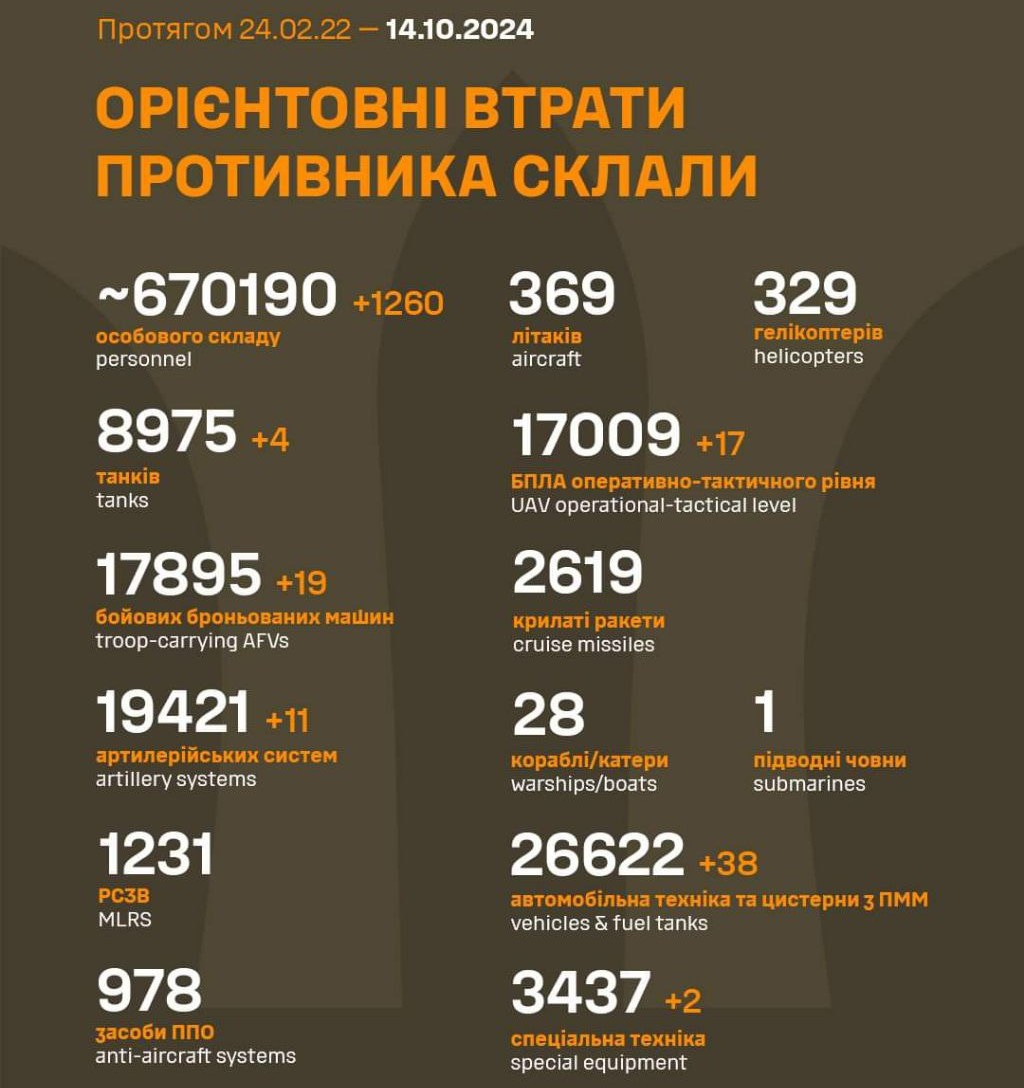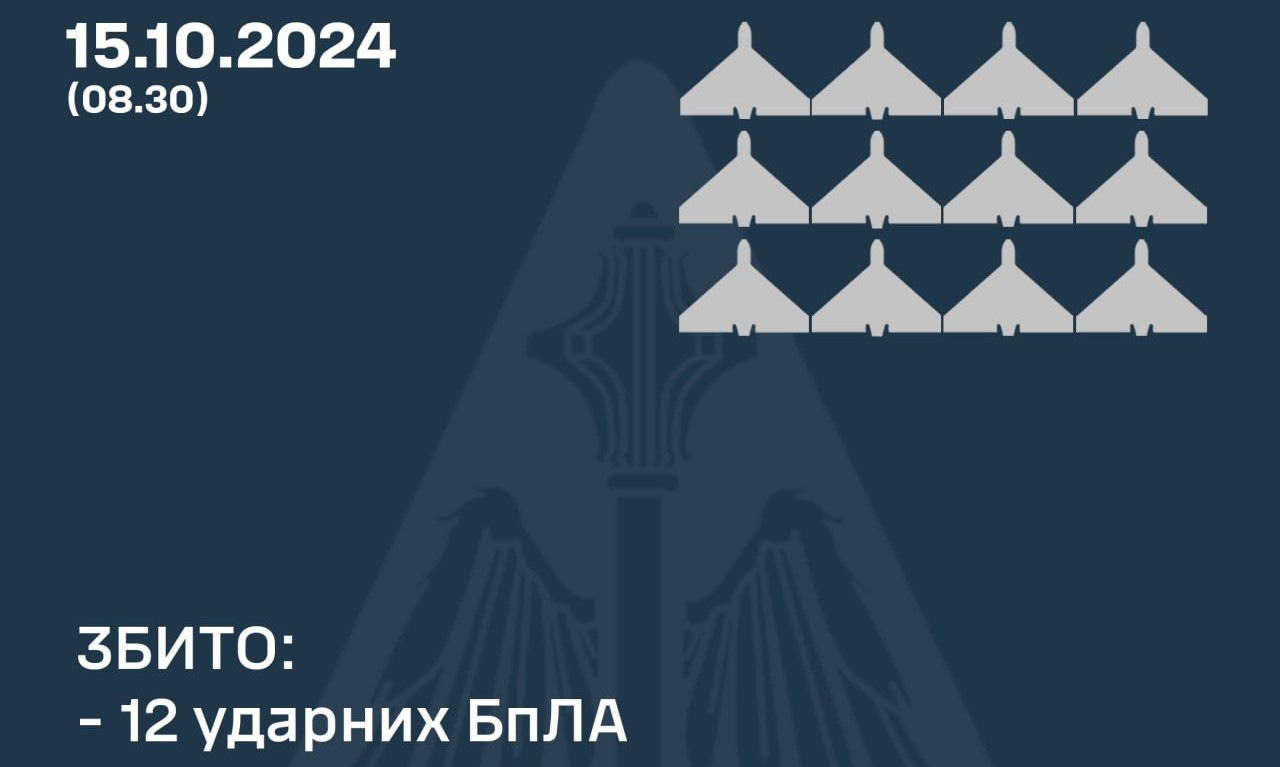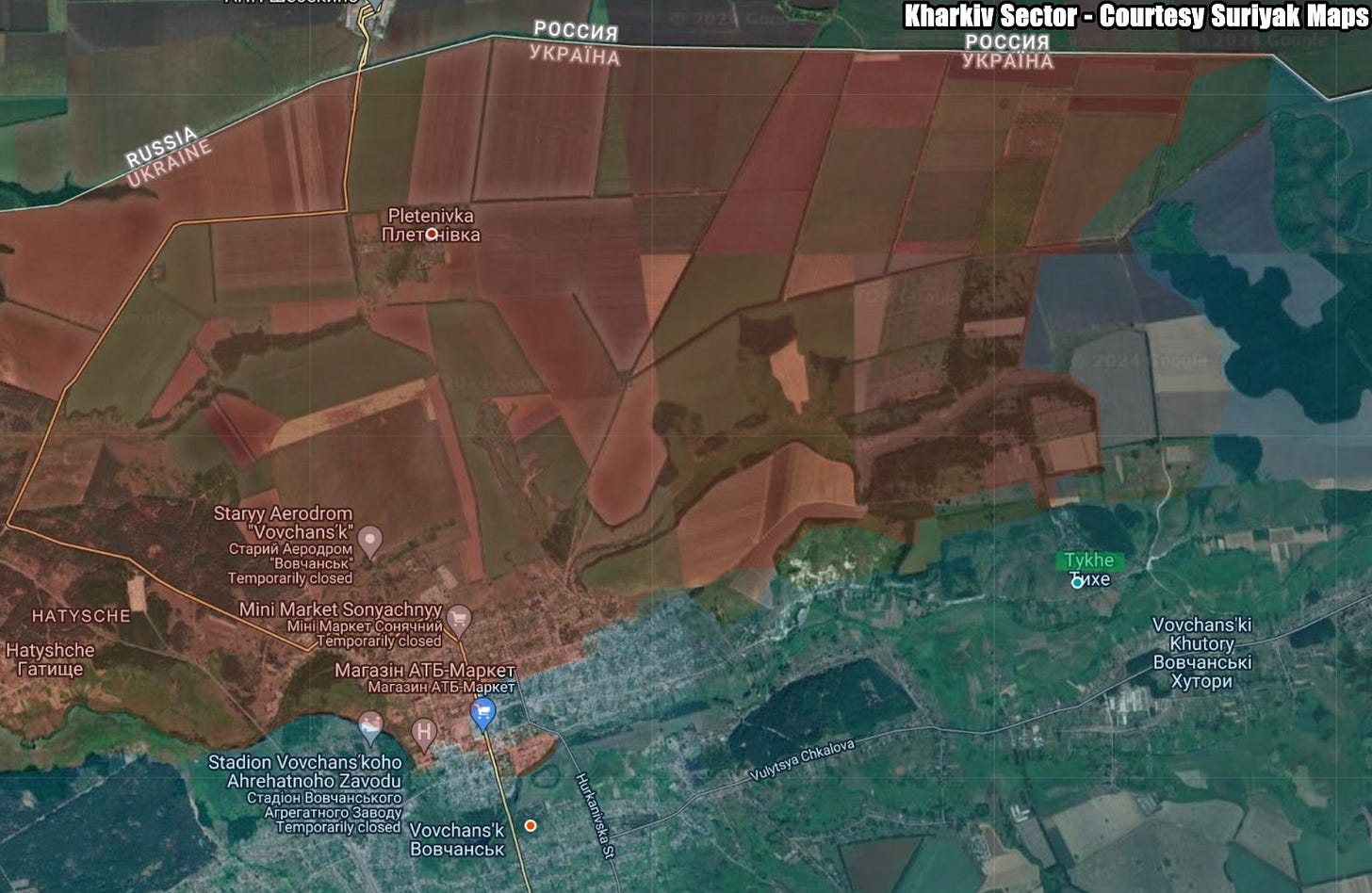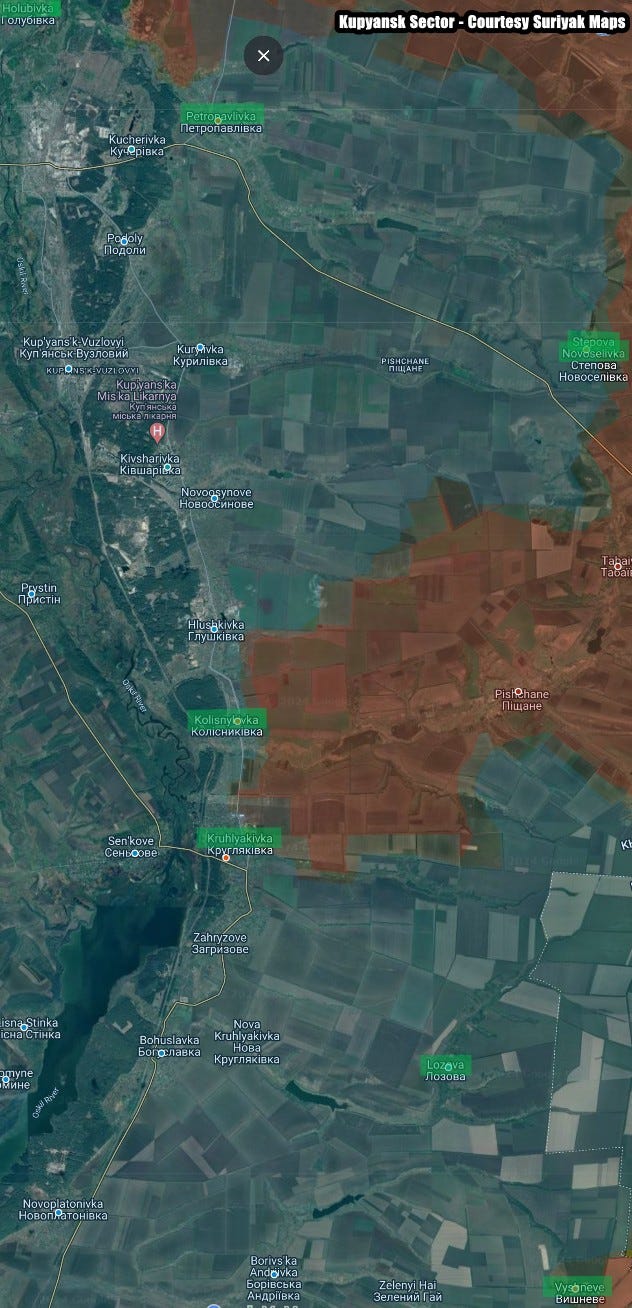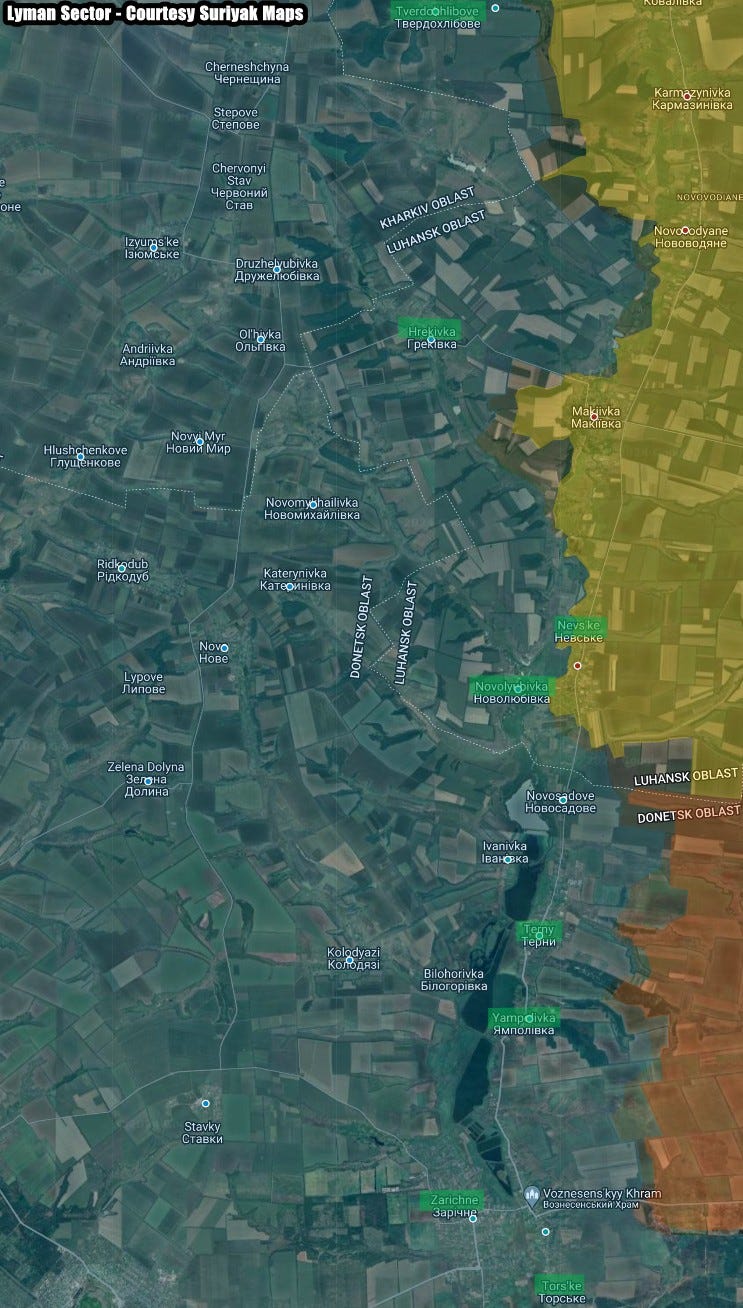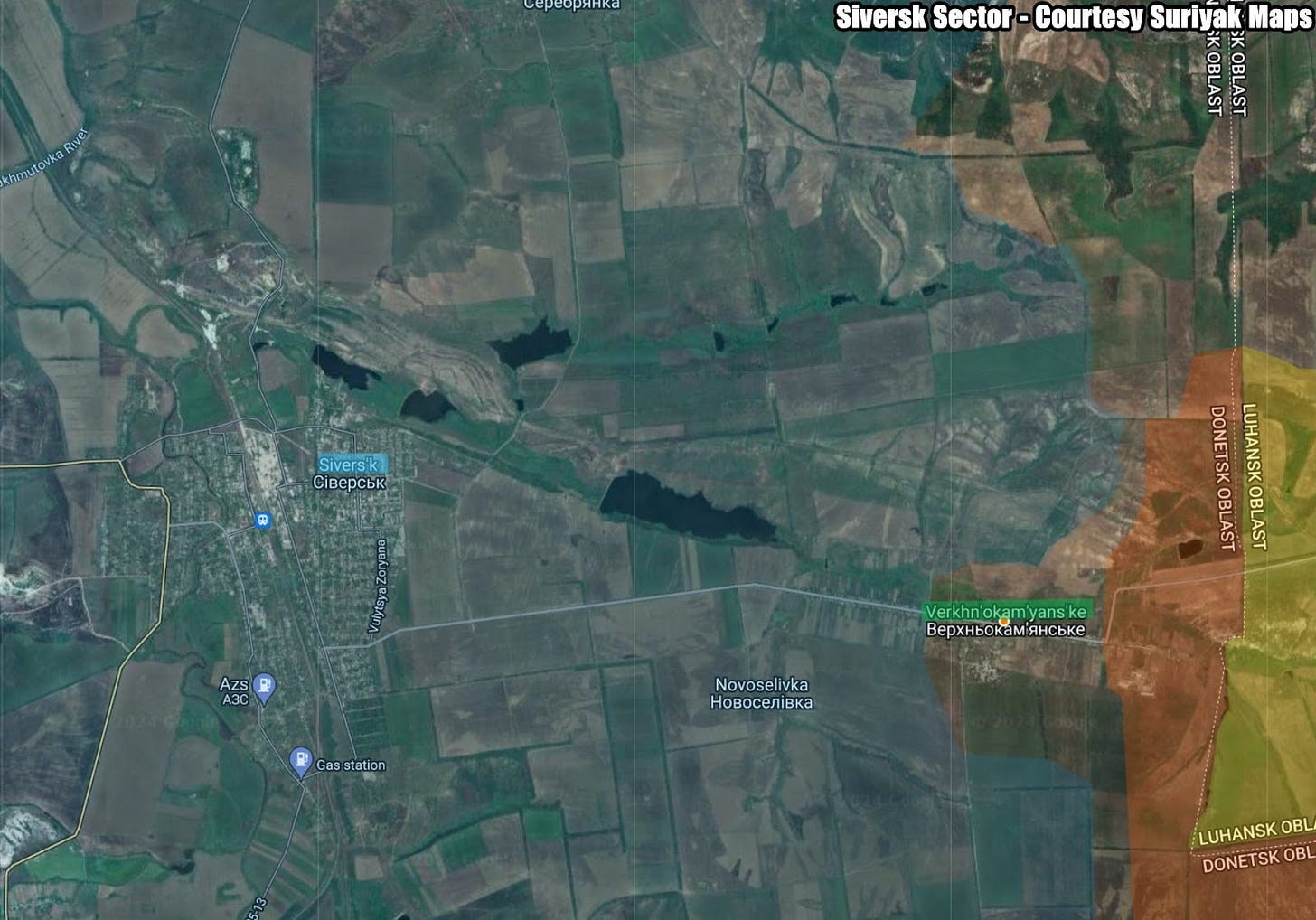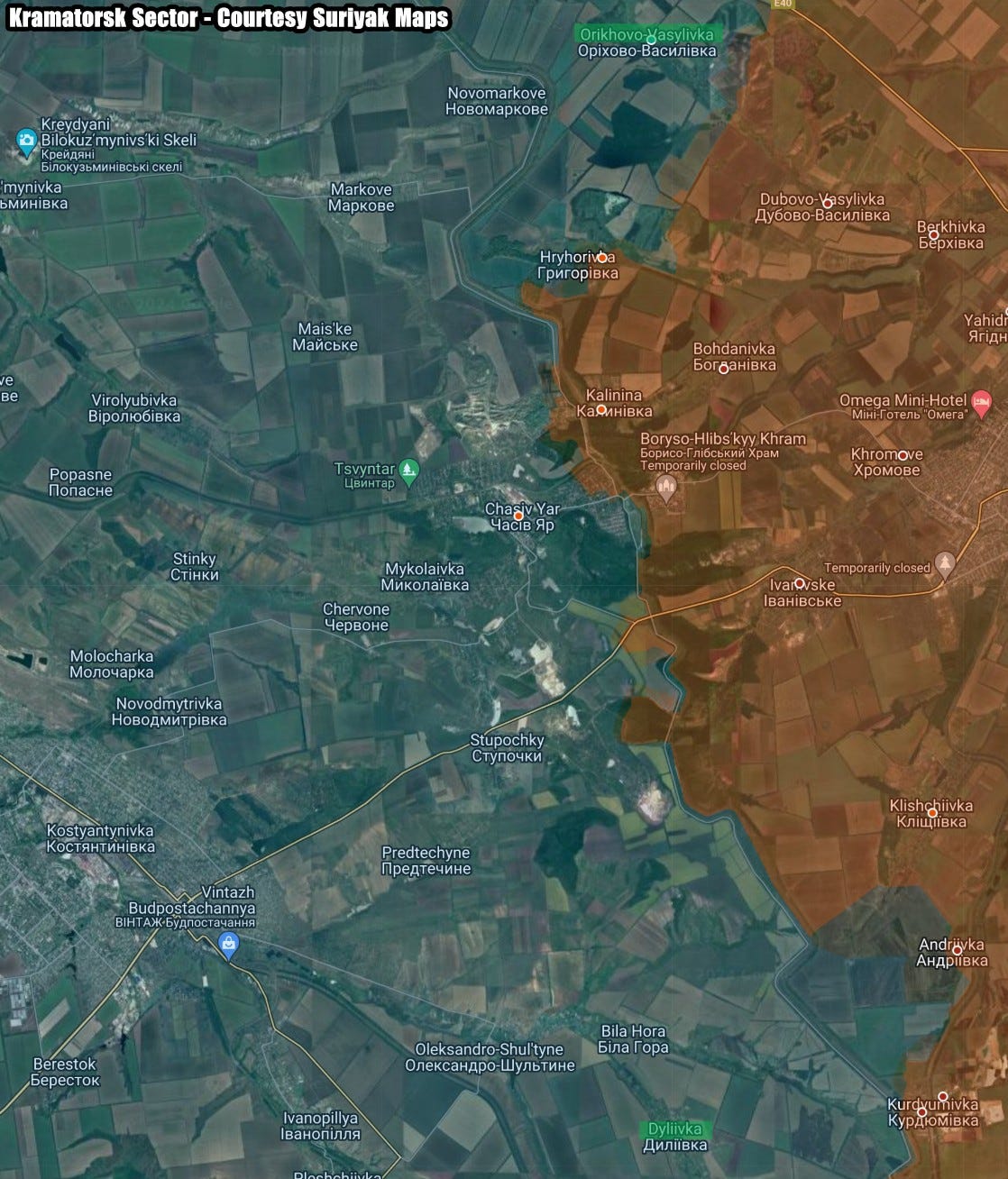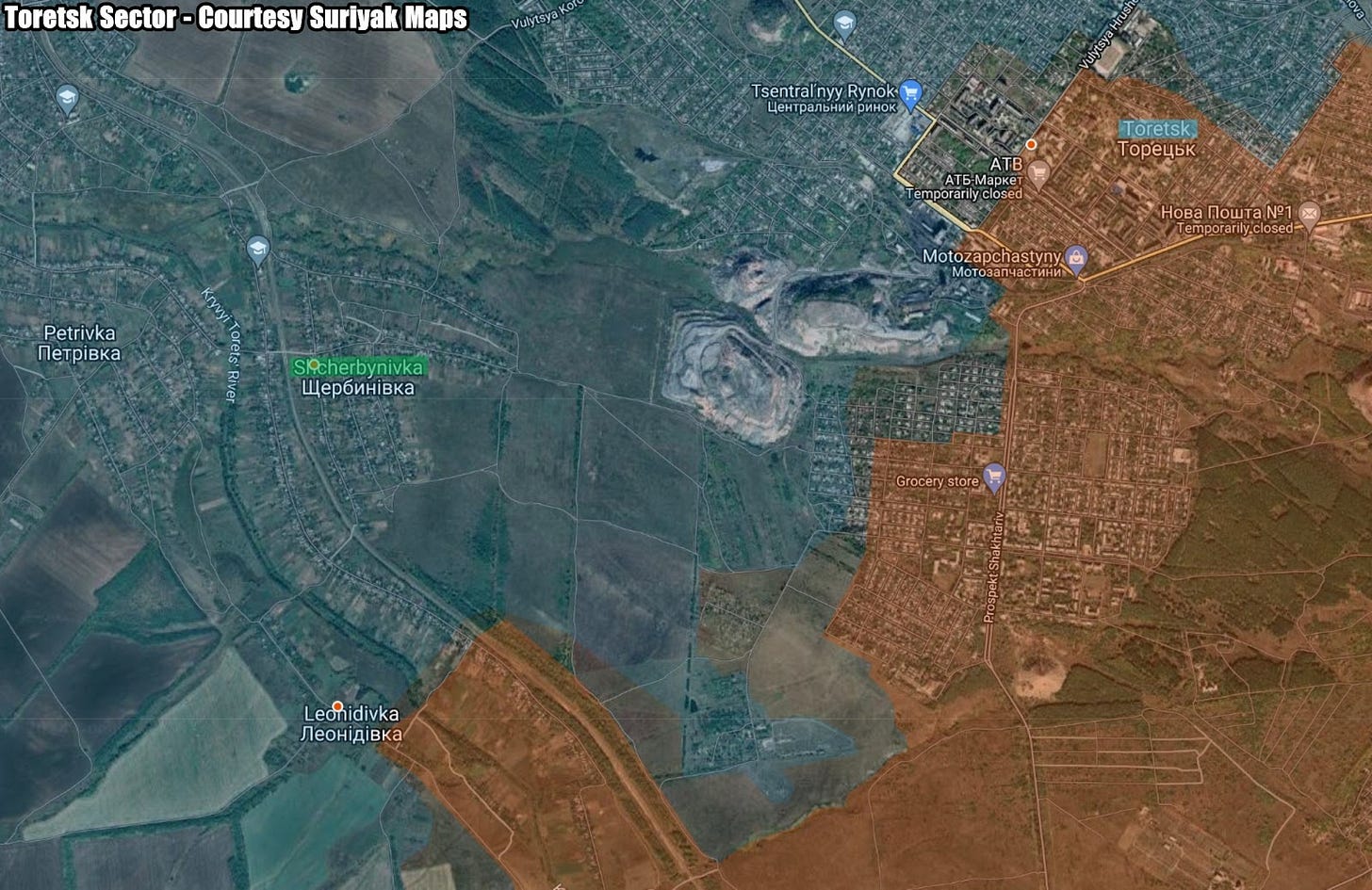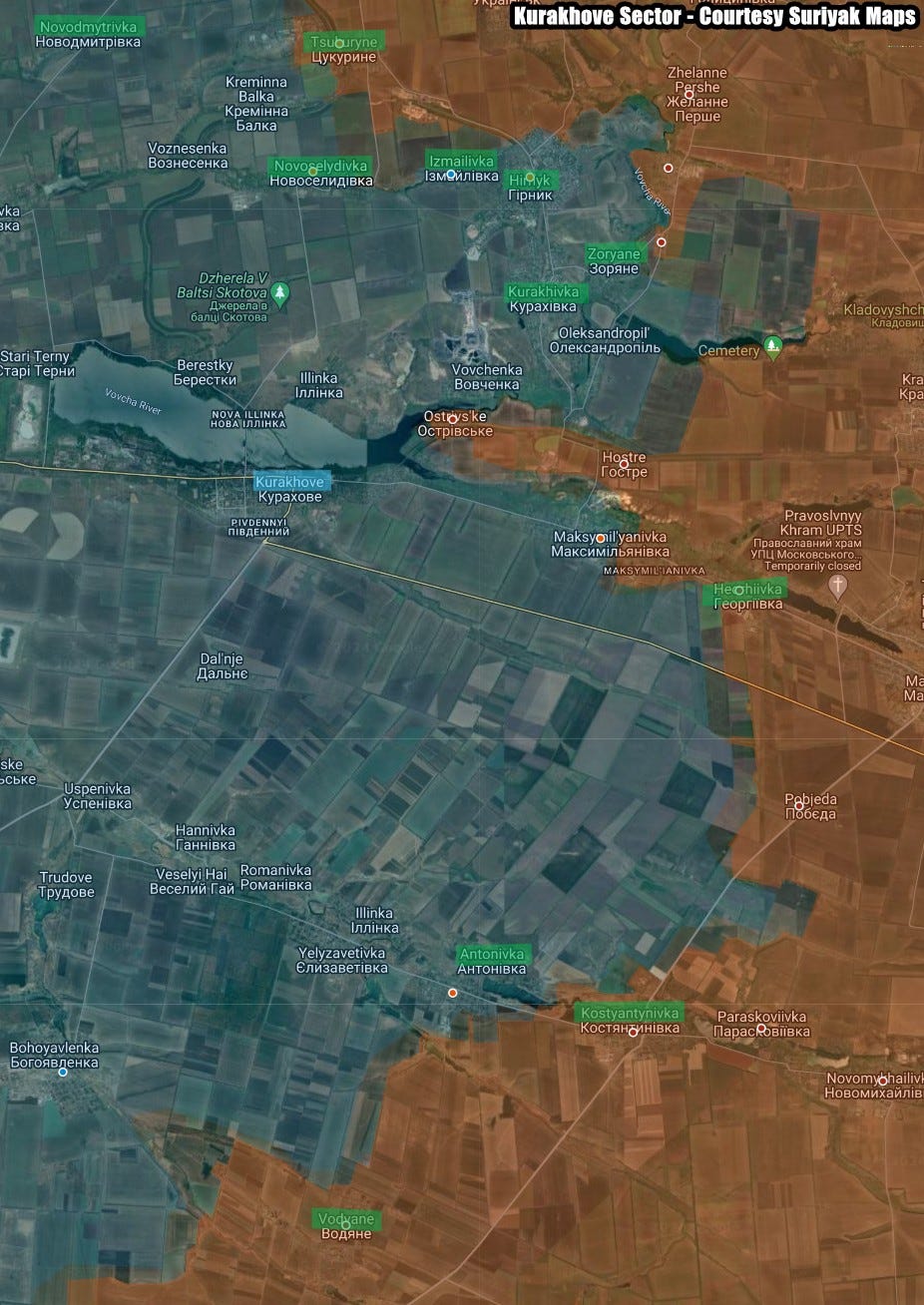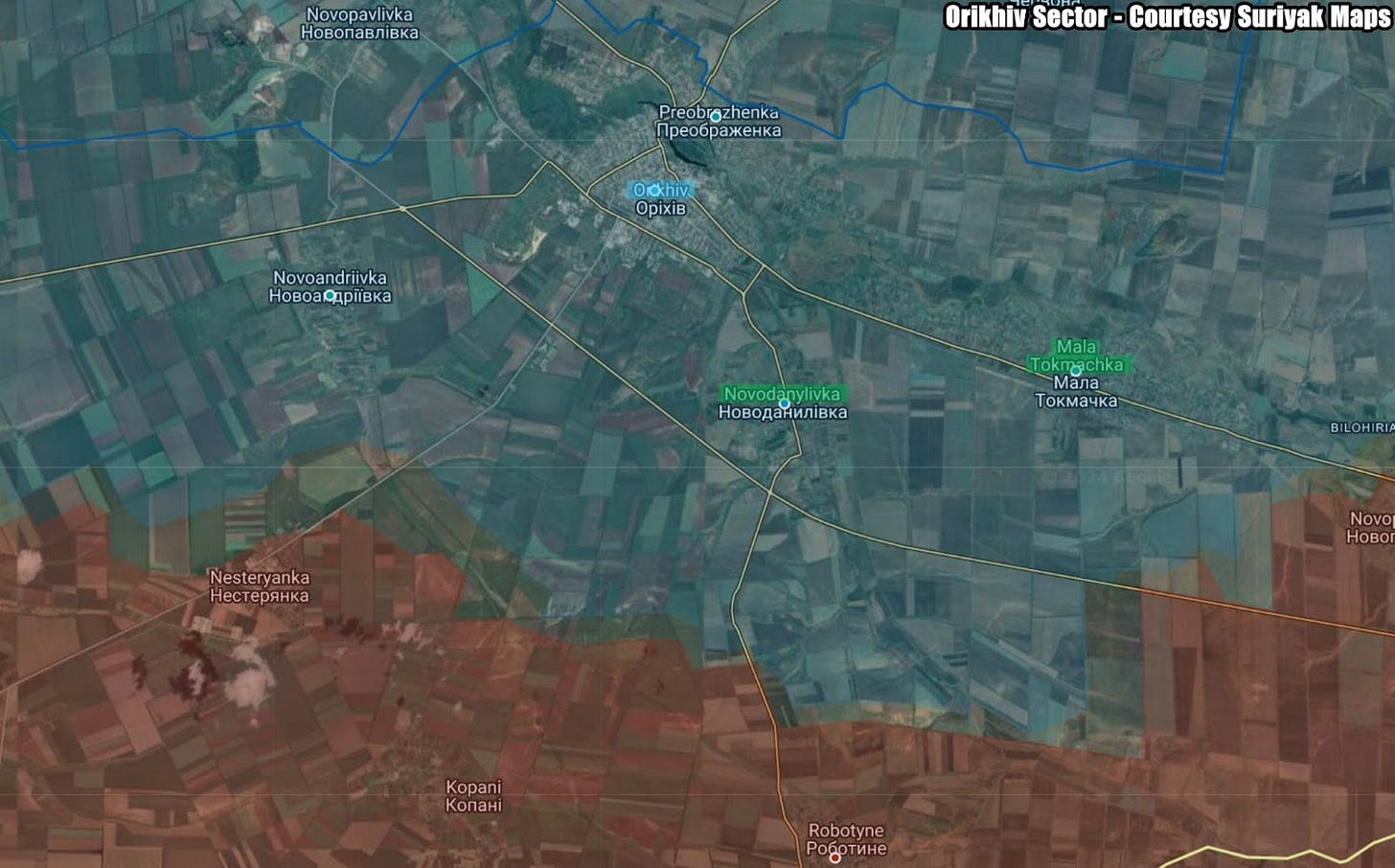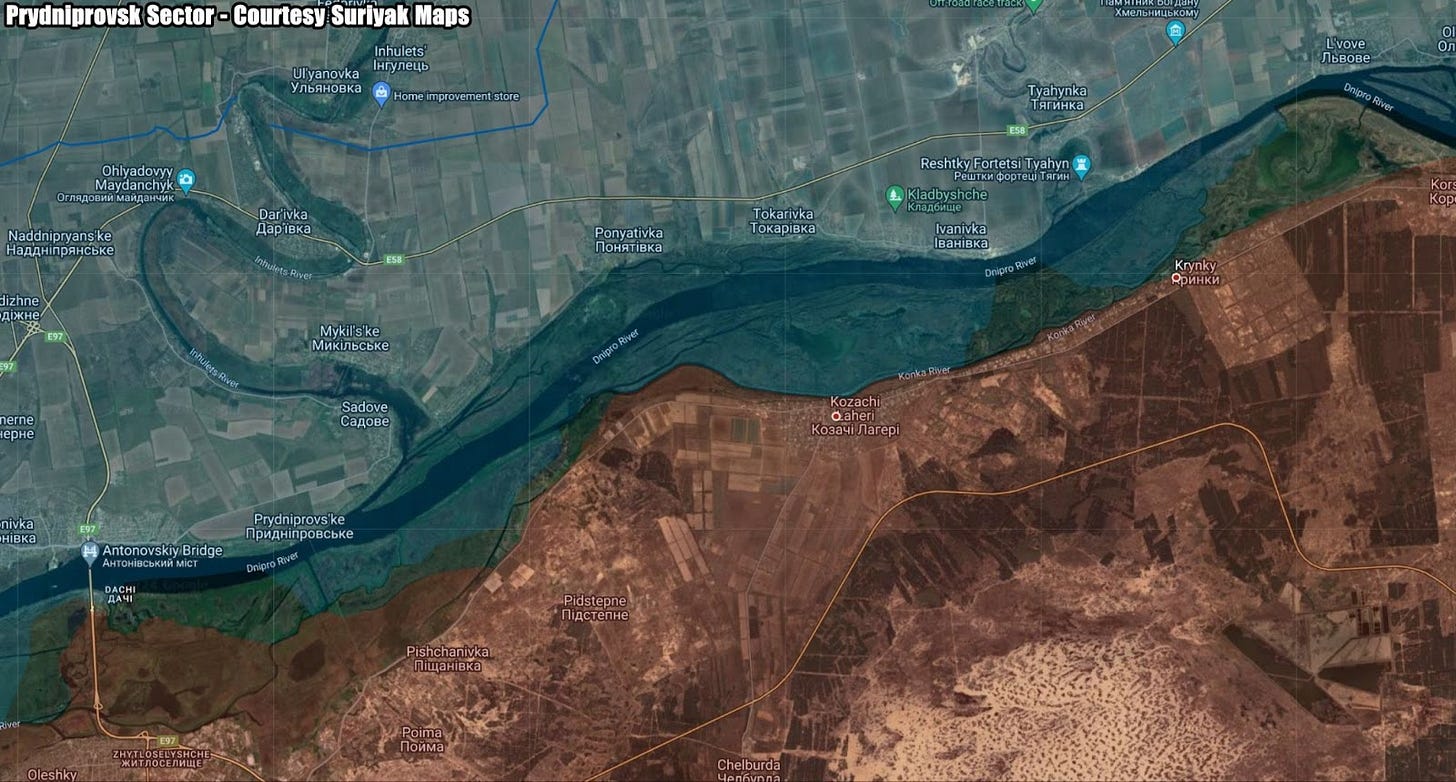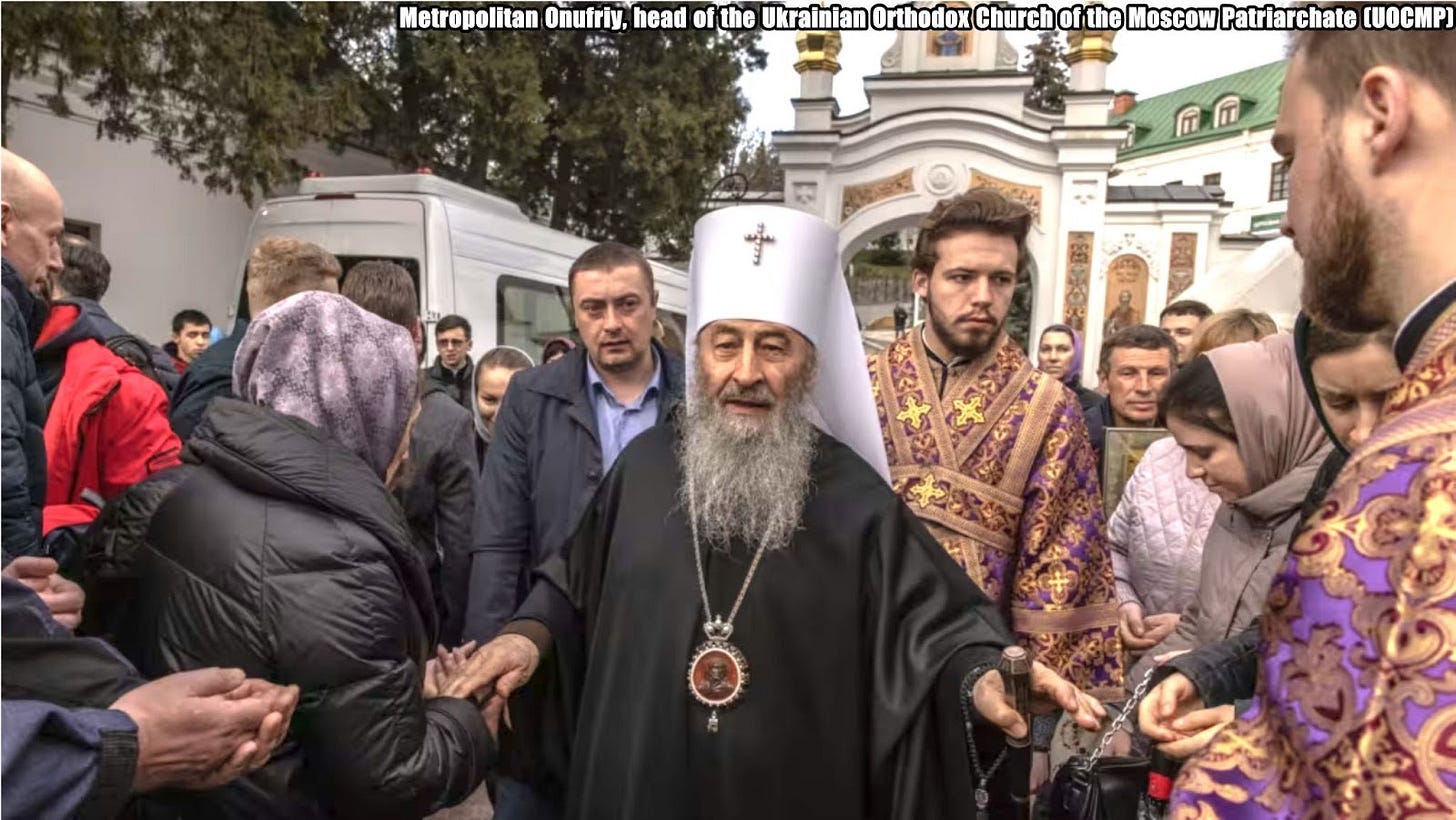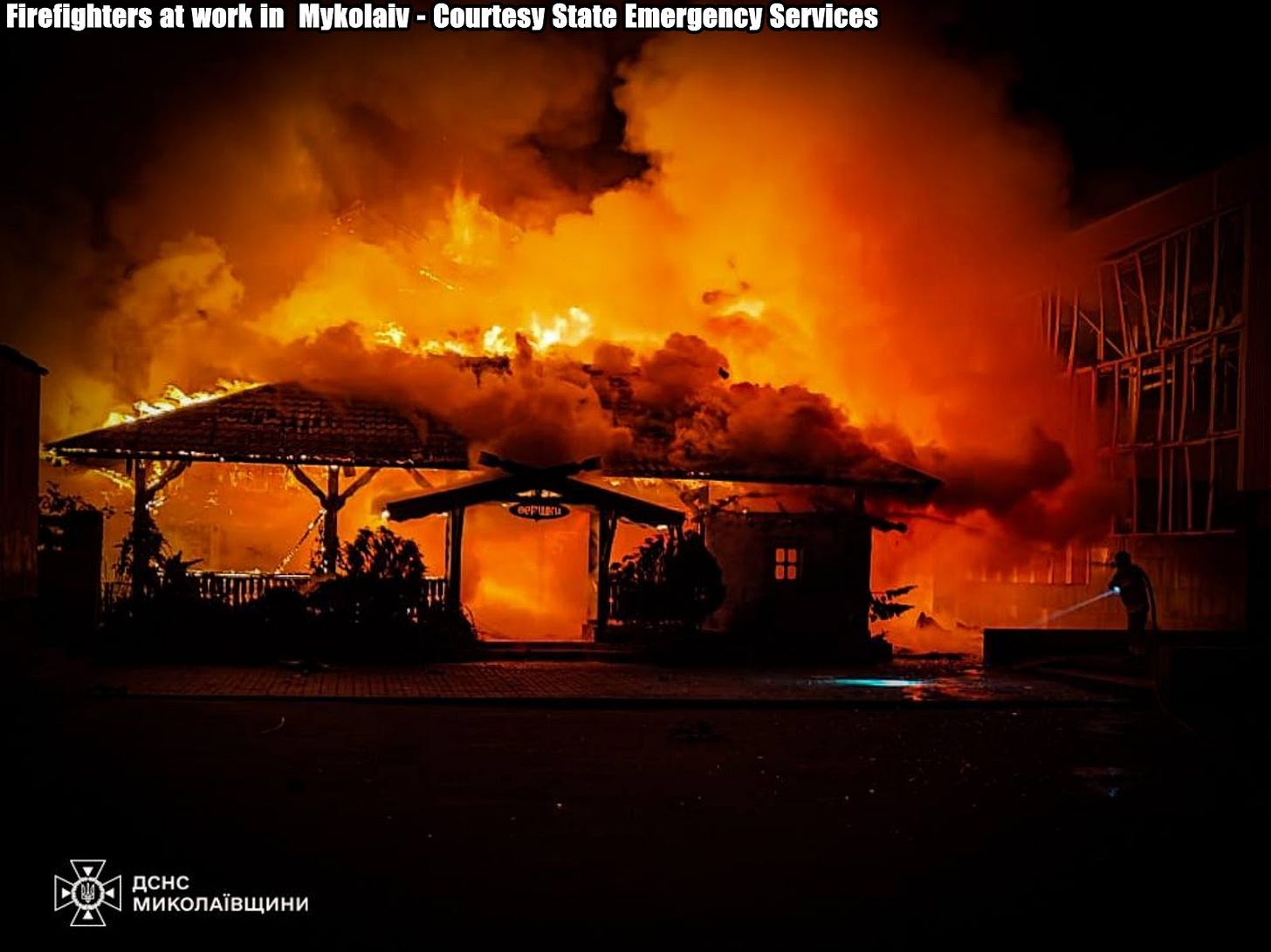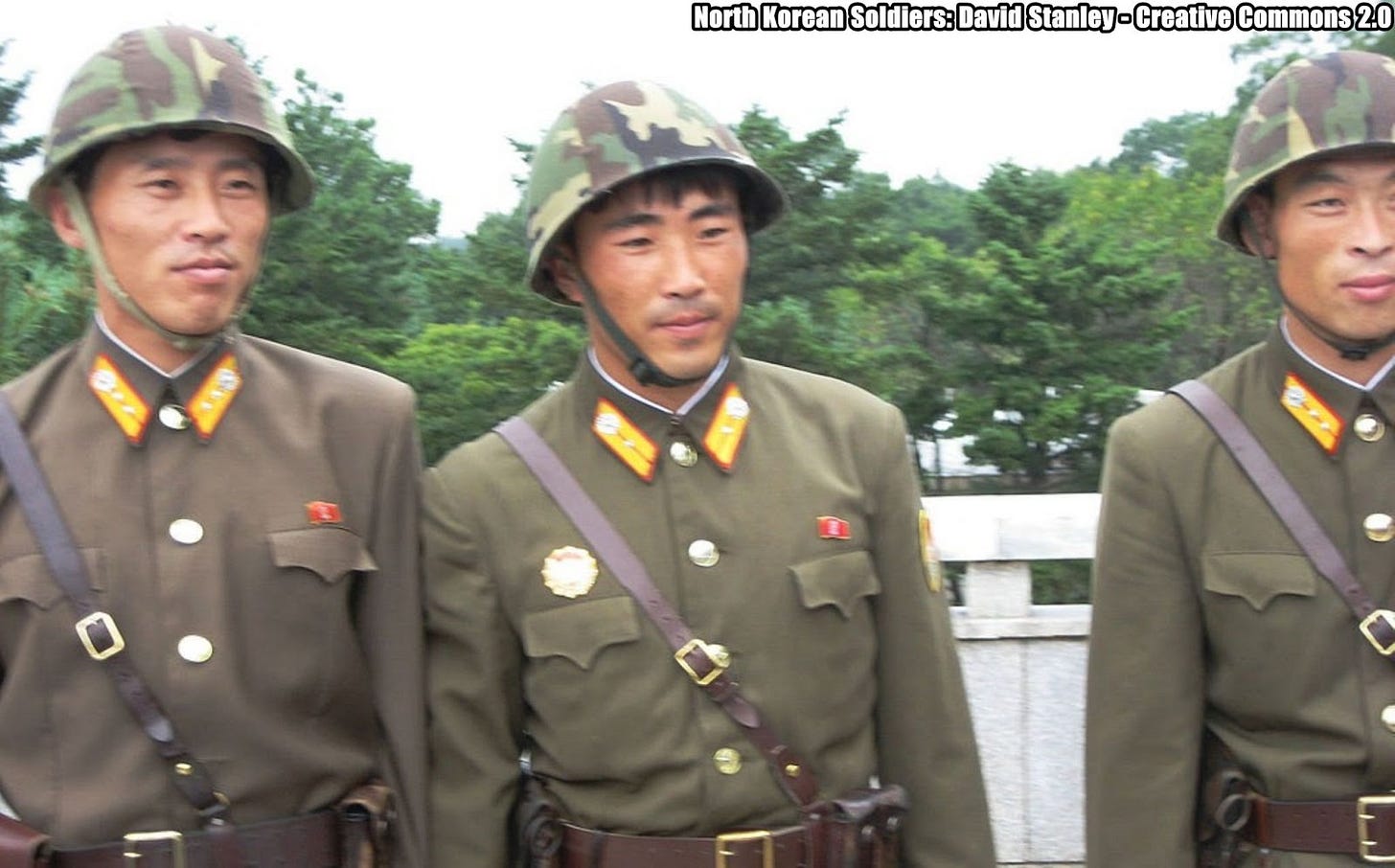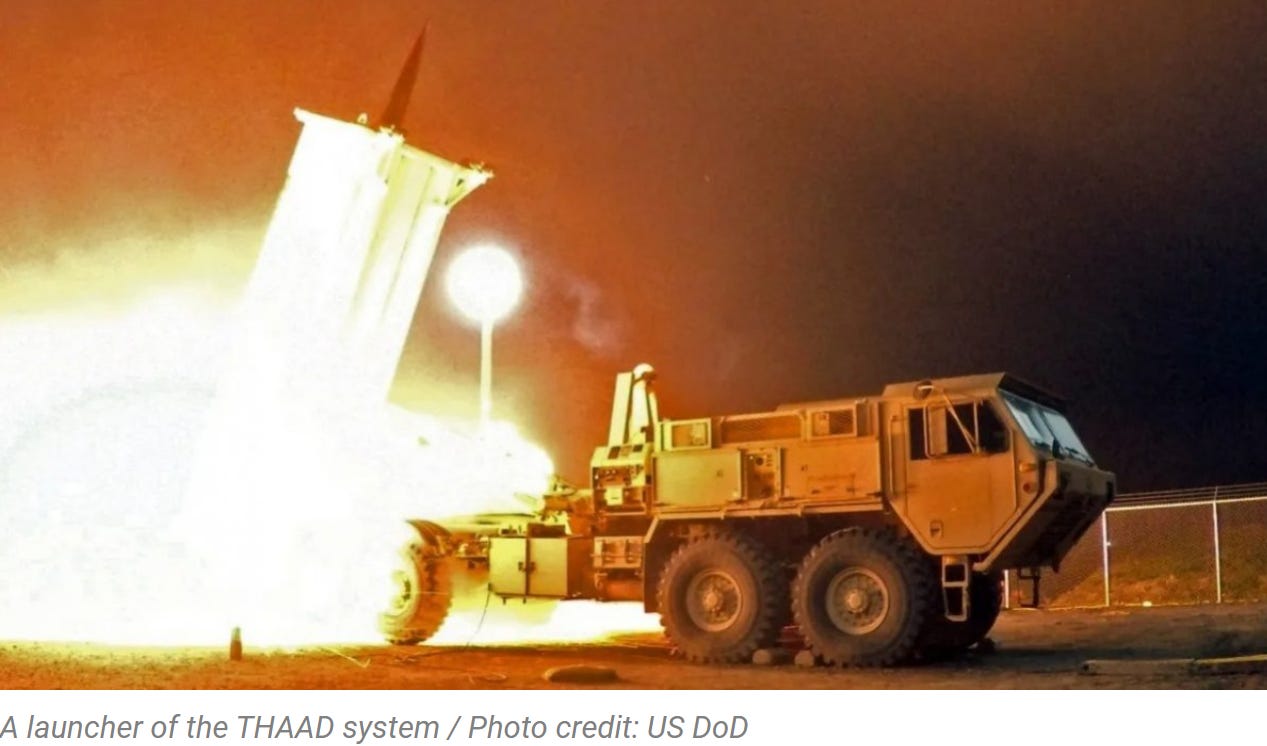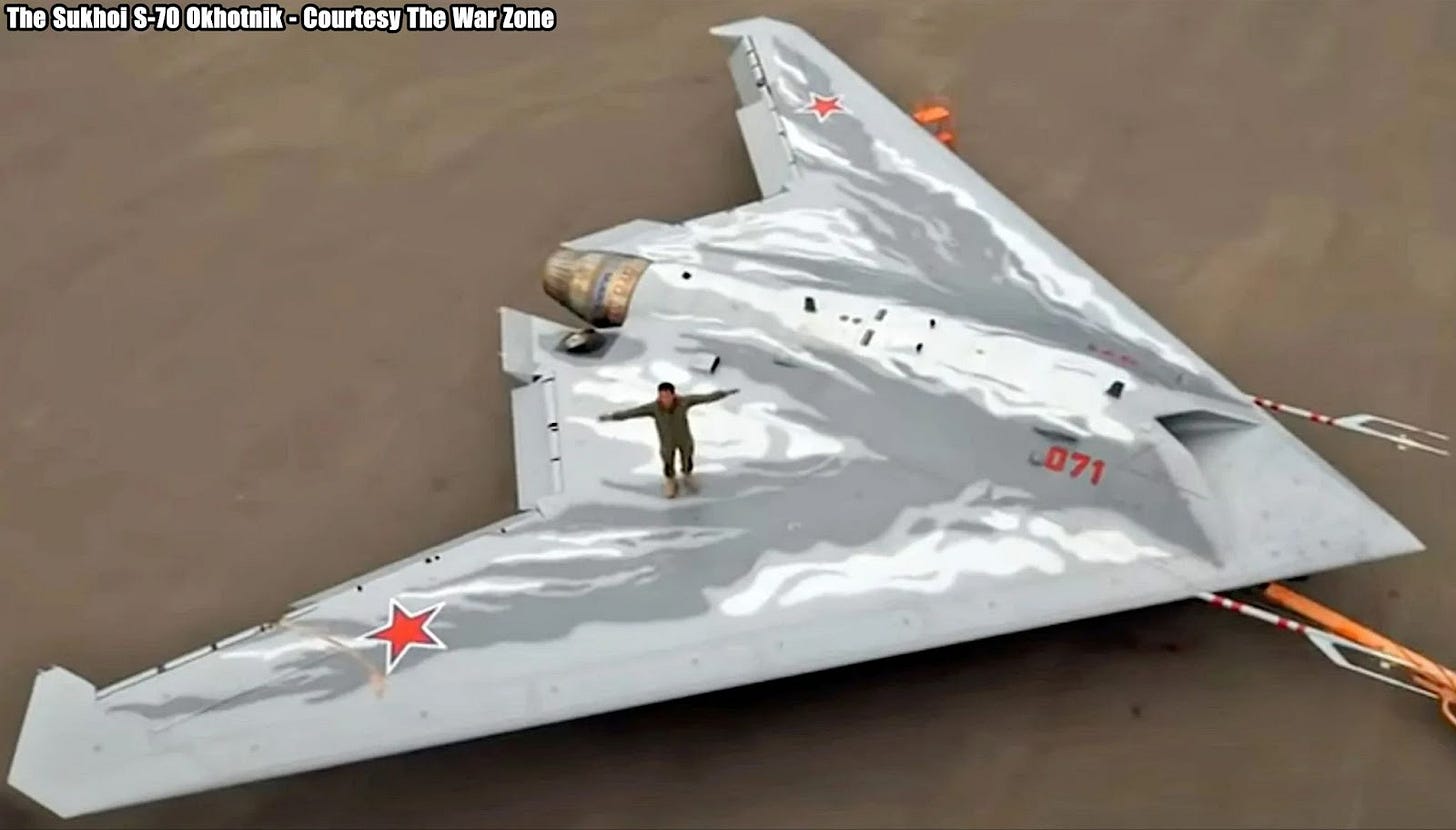Slava Ukraini! In early 2022 I began a Telegram channel aggregating news from a number of sources daily on the war in Ukraine. In June 2023 I began providing a daily draft for the Ukraine War Brief Podcast collecting news from over 70 sources daily, much of which formed the basis of the script. While the Podcast no longer exists I have continued to make this Brief available both on my own Substack and The People’s Media for those who wish to keep up with events on a daily basis.
All the latest news on the Russo-Ukraine War 6 days per week
ALONG THE CONTACT LINE
GSAFU Morning Report
The General Staff of the Armed Forces of Ukraine in its Operational Information update at 22:00 on Oct 14 stated that day 965 of the full-scale invasion of the Russian Federation against Ukraine was about to begin.
During the past day, 189 combat engagements took place. Over the past 24 hours, the enemy carried out 1 missile strike, 38 air strikes, 400 drone strikes and more than 2,250 artillery strikes across the positions of Ukrainian forces.
At the same time, Ukrainian soldiers continue to inflict losses in manpower and equipment on the occupying troops, exhausting the enemy along the entire front line and continue to disrupt the plans of Russian occupiers to advance deep into the territory of Ukraine.
Air Force Daily Report
On the night of October 15, 2024, the enemy attacked the Mykolayiv region with 7 S-300/400 anti-aircraft guided missiles from the Crimean Air Defense Forces, two Kh-59 guided air missiles against Chernihiv region and Sumy region from the airspace of the Kursk region, as well as 17 attack UAVs (launch areas: Kursk, Primorsko-Akhtarsk - Russian Federation)
Aviation, anti-aircraft missile forces, electronic warfare units and mobile fire groups of the Air Force and the Defense Forces of Ukraine were involved in repelling the attack.
As a result of anti-aircraft combat, 12 enemy UAVs were shot down in the Mykolaiv, Kyiv, Odesa, Poltava, Chernihiv, Kirovohrad and Cherkasy regions.
Four Russian drones were lost in location, presumably as a result of active anti-aircraft missile defense. Another UAV is in the air. Combat work continues!
The Russian Border Incursion
The Institute for the Study of War (ISW), a US based think tank, in itsOct 14 Russian Offensive Campaign Assessment stated that Russian forces reportedly recaptured territory in the main Ukrainian salient in Kursk Oblast on October 14. Russian milbloggers claimed that Russian forces recaptured Tolsty Lug (southeast of Korenevo), and one milblogger claimed that elements of the Russian 11th Airborne (VDV) Brigade recaptured Cherkasskaya Konopelka (southeast of Sudzha). The milblogger later claimed that they could not confirm the Russian capture of Cherkasskaya Konopelka but that Russian forces had recaptured the "Lotos" gas station north of the settlement.
Russian milbloggers also claimed that Russian forces recaptured territory southeast of Koreveno near Novoivanovka and southeast of Sudzha near Borky and Plekhovo. ISW has not observed confirmation of any of these Russian claims, however.
A Russian milblogger claimed that reports that Russian forces have advanced to the outskirts of Sudzha are false, and ISW has only collected sufficient data to assess that Russian forces are around seven kilometers from the outskirts of Sudzha at the closest point, although Russian forces may be closer. Russian sources claimed that Russian forces conducted offensive operations near Kremyanoye (east of Korenevo), Lyubimovka (southeast of Korenevo), Zeleny Shlyakh (immediately east of Lyubimovka), Novoivanovka, Fanaseevka (southeast of Sudzha), and Plekhovo.
Russian sources, including the Russian Ministry of Defense (MoD), claimed that Ukrainian forces counterattacked near Olgovka (east of Korenevo), Lyubimovka, Tolsty Lug, Nizhny Klin (southeast of Lyubimovka), Zeleny Shlyakh, and Cherkasskaya Konopelka. Elements of the Russian 106th VDV Division are reportedly operating near Lyubimovka; elements of the 83rd VDV Brigade are reportedly operating near Tolsty Lug and Pokrovsky (southwest of Tolsty Lug); and elements of the 810th Naval Infantry Brigade (Black Sea Fleet [BSF], Southern Military District [SMD]), 155th Naval Infantry Brigade (Pacific Fleet, Eastern Military District [EMD]), 98th VDV Division, and 22nd Spetsnaz Brigade (Russian General Staff Main Directorate [GRU]) are reportedly operating in the Kursk direction.
The Khortytsia operational-strategic group
(Responsible for the northeastern part of Ukraine. )
Kharkiv Sector: Over the last day Ukrainian Defense Forces repelled 2 Russian attacks near Tykhe.
Kupyansk Sector: Russian Forces carried out 16 offensive actions against Ukrainian defensive positions near Holubivka, Petropavlivka, Stepova Novoselivka, Kolsynkivka, Kruhlyakivka, Lozova and Vyshneve. 9 engagements continue.
Lyman Sector: Russian Forces carried out 31 offensive actions against Ukrainian defensive positions near Tverdokhlebove, Hrekivka, Nevske, Novolyubivka, Terny, Yampolivka, Torske and Zarichine. 10 engagements continue.
Siversk Sector: Russian forces carried out 3 unsuccessful assaults in the vicinity of Verkhnokamianske.
Kramatorsk Sector: Russian forces carried out 2 unsuccessful assaults in the vicinity of Orikhovo-Vasylivka and Dyliivka.
Toretsk Sector: Russian forces carried out unsuccessful assaults near Shcherbynivka.
The Tavria operational-strategic group
(Responsible for the central-eastern and southeastern part of Ukraine.)
Pokrovsk Sector : The main efforts of the enemy over the last day focused in this direction. Russian forces conducted 38 attacks against Ukrainian defences in the vicinity of Myrolyubivka, Myrnohrad, Promin, Novopavlivka Lysivka, Novyi Trud, Hyrhorivka and Selydove.
Kurakhove Sector: Russian forces conducted 50 attacks against Ukrainian defences in the vicinity of Novodmytrivka, Tsukuryne ,Novoselydivka, Izmailivka, Hirnyk, Zoryane, Kurakhivka, Heorhiivka, Konstantinivka, Antonivka and Vodyane. 11 engagements continue.
Vremivka Sector: There has been no significant change in the combat environment in the last 24 hours.
Orikhiv Sector: Russian forces made 2 assaults against Ukrainian positions near Mala Tokmachka and Novodanlivka. 1 battle continues.
The Odesa operational-strategic group
(Responsible for Kherson, Qırım, (also known as Crimea) and the Black Sea.)
Prydniprovsk Sector: In this sector, over the last day, Russian forces made 8 unsuccessful attempts to force Ukrainian units from their positions on the left bank of the Dnipro.
TEMPORARILY OCCUPIED TERRITORIES
Nothing major to report.
THE HOME FRONT
80% of Ukrainians support ban of Russia-linked church in poll
Four-fifths of Ukrainians said they supported a new law banning Russia-affiliated religious groups in a survey released on Tuesday, as Kyiv seeks to root out a branch of the Orthodox Church accused of cooperating with Moscow, which is waging war on Ukraine. Reuters reports.
The Ukrainian Orthodox Church of the Moscow Patriarchate (UOCMP), which counted 6% of the respondents as followers, has for years faced accusations that it is a tool of Moscow's influence in Ukraine and that some of its clergy cooperate with Russian intelligence.
The church denies these allegations and maintains that it officially broke off all ties to the Russian Orthodox Church, previously its parent church, in May 2022 - three months after Russia invaded Ukraine.
In August, Ukraine passed a law that bans the Russian Orthodox Church on Ukrainian territory and says that a government commission will assemble a list of "affiliated" organisations whose activities are not allowed.
Lawmakers said the process of banning the UOC would be long and complicated as each UOC parish is an individual legal entity and will have nine months to decide whether it wants to leave the church.
Most Ukrainians are part of the Orthodox Church of Ukraine, a separate church founded in 2019 to be independent of Moscow and recognised by the Ecumenical Patriarch of Constantinople, widely regarded as the spiritual leader of Orthodox Christianity.
Russia's invasion has already driven hundreds of UOC parishes to switch to the OCU, sometimes causing tensions in rural communities with one church.
The poll, conducted by the Kyiv International Institute of Sociology, found broad support for the law across all regions of Ukraine that remain under Kyiv's control. Even in the more Russophone east, over 70% of respondents supported the ban.
Overall, 16% of Ukrainians said they opposed the ban, while another 4% were unsure, with 80% in favour.
Throughout the war, Kyiv has highlighted the national security risks it says the Church poses.
Dozens of UOC clergy have been arrested and tried on charges including treason and cooperating with Russia. The UOC says it is the victim of a witch hunt.
Ukraine has traded a number of UOC clergy for Ukrainian prisoners of war held by Russia during the war. One unidentified clergyman accused of working for Russia was swapped for 28 Ukrainian soldiers.
Lawmakers in Estonia and the Czech Republic have also raised concerns this year about Moscow's influence through the Russian Orthodox Church in their countries.
Russian air attack hits Mykolaiv leaving 1 dead and 23 wounded.
Russian military forces conducted a nighttime air assault on Ukraine, utilising 17 Shahed drones and various missile types to target multiple regions. Euromaidan Press reports.
Russian forces launched a series of air attacks on Ukraine overnight on October 15, employing a combination of drones and missiles to target multiple regions across the country. The Ukrainian Air Force reported that the assault involved 17 Shahed attack drones, seven S-300/400 missiles targeting Mykolaiv Oblast, and two Kh-59 guided air-to-surface missiles aimed at Chernihiv and Sumy oblasts.
Ukrainian air defence systems were reportedly activated in response to the threat, successfully intercepting 12 enemy drones across various regions including Mykolaiv, Kyiv, Odesa, Poltava, Chernihiv, Kirovohrad, and Cherkasy oblasts. The Air Force statement noted that four Russian drones were “locationally lost,” likely due to “electronic warfare countermeasures,” while one drone remained airborne at the time of the report (about 8:30 a.m.). By 9:00, the air alerts were lifted.
The attack had a particularly severe impact on the city of Mykolaiv. Vitalii Kim, head of Mykolaiv Oblast Military Administration, reported that around 02:30, the Russians struck the city with what are believed to be S-300 missiles. The assault resulted in one fatality, a woman, and left 23 other civilians injured.
The State Emergency Service of Ukraine (DSNS) provided updates on the firefighting efforts in Mykolaiv. They reported extinguishing two fires covering areas of 30 and 400 square metres respectively. In another district of the city, a restaurant complex and commercial pavilions were engulfed in flames, with the fire being contained to an area of 1400 square metres by morning, with liquidation efforts still ongoing as of 8 a.m.
RUSSIAN WORLD
Russia Is Willing to Let Ruble Weaken to Ease Sanctions Pressure
Russia’s ruble is on the slide toward 100 per dollar and this time the authorities appear resigned to letting it hit a level that previously provoked strong policy responses. Bloomberg reported on Oct 15.
A weaker ruble isn’t a concern now and it will benefit the state budget amid plans for increased spending next year, two people with knowledge of the situation said, asking not to be identified discussing government policy. Officials are willing to let the ruble reach 100 to the dollar, the people said.
The Bank of Russia has relied on interbank transactions to calculate the ruble rate since the Moscow Exchange halted dollar and euro trading after the US sanctioned the group in June. The punitive measures have exacerbated a foreign-currency shortage, and central bank data show the ruble is now about 9% weaker than on the last trading day. A US deadline for entities to exit operations on the bourse expired on Oct. 12.
“In the current situation, 100 rubles per dollar isn’t so scary, although it does have a certain inflationary effect,” said Oleg Vyugin, a former top Bank of Russia official.
The ruble has also declined over the same period against China’s yuan, which became the main alternative to what the Kremlin views as “toxic” currencies since President Vladimir Putin’s 2022 invasion of Ukraine prompted sweeping sanctions by the US and its allies. The Russian currency has fallen 11% against the yuan on the Moscow exchange to 13.26, the lowest since May.
Economy Ministry forecasts show the government is planning for a weaker currency, with officials expecting an average of 96.5 rubles per dollar in 2025 compared with 91.2 this year.
The ruble’s recent weakness reflects difficulties with foreign trade payments facing importers and exporters, said Dmitry Polevoy, investment director at Moscow-based Astra Asset Management.
With the US in June ramping up the threat of secondary sanctions on banks in Russia’s key trading partners, businesses are facing growing payment difficulties. They’re getting less foreign currency now and having more trouble returning it to Russia from places like China and Turkey.
Shoigu Grows Increasingly Vulnerable as Putin’s Favour Wanes
In late September, in the Siberian republic of Tyva almost 5,000 kilometres from Moscow, the Great Khural regional parliament convened to swear in its new cohort of deputies at the start of its autumn session. The Moscow Times reports.
But as soon as the festive opening was over, the expression of Ruslan Tsalikov, the most notorious of these new deputies, visibly soured. Tsalikov was expecting to be nominated as Tyva’s senator in Russia’s upper-house Federation Council — but the matter was never raised.
“The naked eye could see how upset he was. After all, Ruslan Khadzhismelovich is a very experienced apparatchik. But even he could not hide his feelings,” a person who attended the meeting told The Moscow Times.
It was clear that a political scandal was unfolding.
Tsalikov, a longtime close ally and personal PR handler of former Defense Minister Sergei Shoigu, had served as Shoigu’s deputy minister for nearly 12 years and resigned shortly after Shoigu was dismissed in May.
When he was elected to the Great Khural in Shoigu’s home region in September, Tsalikov had hoped to return to Moscow as the region’s senator rather than stay in Tyva. Shoigu, widely seen as Tyva’s informal overseer, personally lobbied for Tsalikov’s nomination, The Moscow Times understands.
INTERNATIONAL NEWS
North Korean soldiers to fight for Russia
North Korea has sent several thousand soldiers to Russia's Far East to join regular Russian military units, New Voice reported citing a source in Ukrainian special services on Oct. 15.
A so-called "Special Buryat Battalion" is currently being formed at the base of the 11th Separate Air Assault Brigade of the Russian army, staffed with North Korean citizens.
"The estimated number of personnel is up to 3,000. Currently, the process of equipping the battalion with small arms and ammunition is underway," the source told NV.
It is likely that the battalion will be deployed to carry out combat missions near the settlements of Sudzha and Kursk. However, this unit is currently located in Ulan-Ude, the capital of Russia's Buryatia Republic, the source added.
"We see that the alliance between Russia and regimes like North Korea is growing,” President Volodymyr Zelenskyy said on Oct. 13.
“This is no longer just about the transfer of weapons. It is practically about the transfer of North Korean personnel to the occupying military forces."
Ukraine Asked the US for the THAAD System Against Russian Kinzhal Missiles, But It Will Be Deployed in Israel.
The US military has a limited number of THAAD anti-ballistic missile systems, the next of which will be deployed in the Middle East. Defense Express reports.
The Pentagon has officially confirmed that the US Army will deploy a battery of the THAAD anti-ballistic missile defence system as well as 100 service personnel in Israel, amid a possible strike on Iran and Tehran's retaliatory actions.
Such a system can intercept ballistic targets at a distance of up to 200 kilometres and the system is extremely relevant for Ukraine to intercept the Russian Iskander and Kinzhal missiles. It should be noted that as early as December 2023 there were reports that Ukraine was negotiating with the US about the possible acquisition of THAAD.
However, almost a year later, that is, as of the fall of 2024, there are no new reports on how the THAAD story is developing for Ukraine. At the same time, it is already possible to talk about the fact of deploying a battery of such a system in Israel - against the background of the conflict in the Middle East.
It should be noted that the transfer of THAAD to this region brings its own difficulties for the American military, which The War Zone portal wrote about in its publication.
Here, first of all, we are talking about the American military themselves, who will serve the THAAD battery in Israel. Because, on the one hand, we are talking about a powerful anti-missile system, which, on the other hand, can be quite specifically threatened by the actions of Iran.
The next point is that the transfer of the THAAD battery to Israel increases the level of operational stress for the US Army. The US has only seven batteries of this system. The American military hopes to receive the eighth THAAD battery only next year.
Until such a replenishment has taken place, we have to assume that, in addition to Israel, one THAAD battery has already been deployed in another part of the Middle East and in South Korea. In addition, another THAAD battery is deployed on the island of Guam.
It is interesting that the authors of TWZ, referring to data from the Missile Defense Agency, indicate the approximate configuration of the THAAD battery - up to 9 mobile launchers for eight missiles each, one or two fire control centres and support vehicles, including generators. The composition of the battery, which the US Army transferred to Israel, is currently unknown.
MILITARY & TECH
Russia’s downing its own latest drone is an expensive and embarrassing failure.
The UK Ministry of Defence in their Oct 15 Intelligence Update on Ukraine stated that On 5 October, Russia shot down its own S-70 Okhotnik unmanned aerial vehicle as it flew west over the front line in Ukraine.
UK Intelligence considers that Russia lost control of the UAV and decided to destroy it to prevent it from falling into enemy hands.
It is noted that the S-70, developed by Sukhoi, has been in development for at least a decade and was spotted during tests at the Russian airbase in Akhtubinsk.
"It is likely Russia waited to the last moment before choosing to engage the UCAV [to shoot it down] having exhausted attempts to bring it [the Okhotnik] back under control. This demonstrates yet another expensive and embarrassing failure of Russian weapons development and will almost certainly delay the S-70 programme," the review says.
That’s it for today’s Draft folks if you would like to keep up with events in Ukraine daily please consider subscribing, its free!
Feel free to share this update with your friends. Heroyam Slava!







